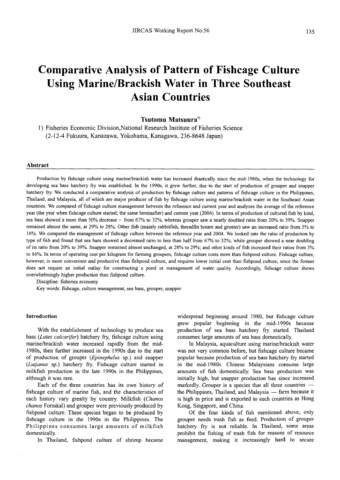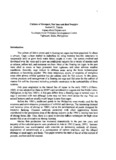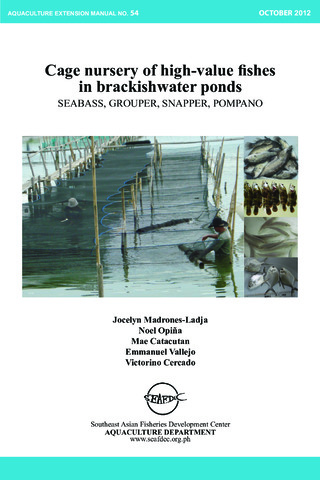Comparative analysis of pattern of fishcage culture using marine/brackish water in three Southeast Asian countries
- Global styles
- MLA
- Vancouver
- Elsevier - Harvard
- APA
- Help

閲覧/開く
日付
2007Page views
238ASFA keyword
AGROVOC keyword
Taxonomic term
Geographic names
Metadata
アイテムの詳細レコードを表示する
Share
抄録
Production by fishcage culture using marine/brackish water has increased drastically since the mid-1980s, when the technology for developing sea bass hatchery fry was established. In the 1990s, it grew further, due to the start of production of grouper and snapper hatchery fry. We conducted a comparative analysis of production by fishcage culture and patterns of fishcage culture in the Philippines, Thailand, and Malaysia, all of which are major producer of fish by fishcage culture using marine/brackish water in the Southeast Asian countries. We compared of fishcage culture management between the reference and current year and analyzes the average of the reference year (the year when fishcage culture started; the same hereinafter) and current year (2004). In terms of production of cultured fish by kind, sea bass showed a more than 50% decrease - from 67% to 32%, whereas grouper saw a nearly doubled ratio from 20% to 39%. Snapper remained almost the same, at 29% to 28%. Other fish (mainly rabbitfish, threadfin bream and grunter) saw an increased ratio from 5% to 16%. We compared the management of fishcage culture between the reference year and 2004. We looked into the ratio of production by type of fish and found that sea bass showed a decreased ratio to less than half from 67% to 32%; while grouper showed a near doubling of its ratio from 20% to 39%. Snapper remained almost unchanged, at 28% to 29%; and other kinds of fish increased their ratios from 5% to 16%. In terms of operating cost per kilogram for farming groupers, fishcage culture costs more than fishpond culture. Fishcage culture, however, is more convenient and productive than fishpond culture, and requires lower initial cost than fishpond culture, since the former does not require an initial outlay for constructing a pond or management of water quality. Accordingly, fishcage culture shows overwhelmingly higher production than fishpond culture.
Keywords
fishcage culture management sea bass grouper snapperType
Book chapterISSN
1341-710Xシリーズ
JIRCAS Working Report; No. 56Collections
- Books and Book Chapters [120]
Related items
Showing items related by title, author, creator and subject.
-
Culture of grouper, sea bass and red snapper
Toledo, Joebert D. (University of the Philippines Aquaculture Society, Inc., 2001)Marine fish production has increased dramatically in the past ten years and majority of the cultured species were produced in Asia in 1992. Increase in production was accompanied with concerns on increasing outbreak of ... -
Series: Aquaculture extension manual; No. 54
Cage nursery of high-value fishes in brackishwater ponds: Seabass, grouper, snapper, pompano
Madrones-Ladja, Jocelyn; Opiña, Noel; Catacutan, Mae; Vallejo, Emmanuel; Cercado, Victorino (Aquaculture Department, Southeast Asian Fisheries Development Center, 2012)This extension manual describes nursery pond requirements, nursery rearing procedures, common diseases of young marine fish, and economic analysis of cage nursery as an enterprise separate from hatchery and grow-out culture. -
Grow-out culture of seabass, grouper and snapper in ponds
Coniza, Eliseo B.; Catacutan, Mae R. (Aquaculture Department, Southeast Asian Fisheries Development Center, 2009)






